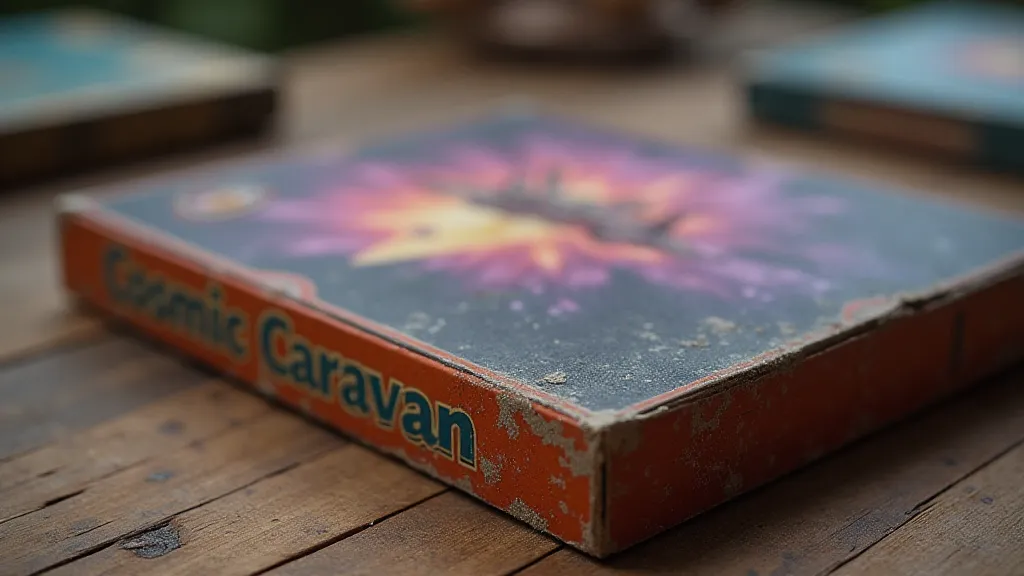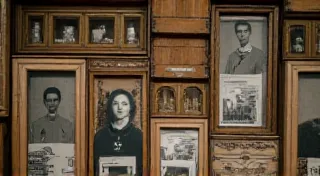The Rusting Monolith: Deconstructing the Failures and Lessons from Discarded Games
There's a particular melancholy that clings to forgotten things. It's the same feeling I get when I see a neglected antique accordion, its bellows stiff, its keys yellowed with age. These instruments, once vibrant with music and laughter, now stand as silent testaments to fading popularity, shifting tastes, and the relentless march of time. Board games, I’ve realized, share that same quiet dignity, that same potential for a poignant story when they’re lost to the sands of commercial failure.
My own fascination with these “rusting monoliths” began with a dusty box I unearthed at a flea market. It contained “Cosmic Caravan,” a 1978 Parker Brothers game about interstellar trading. The box art, a vibrant clash of purple nebulas and futuristic spaceships, promised adventure. The reality was… a tangled mess of convoluted rules, imbalanced gameplay, and a profound lack of fun. Yet, holding those worn components – the oddly shaped plastic tokens, the faded cardboard money – I felt a connection to the people who once held them with hope and excitement. What went wrong? Why did something that seemed so promising end up discarded?

The Anatomy of a Failure: More Than Just Bad Luck
It’s easy to dismiss failed board games as simply “bad.” But there’s a rich tapestry of reasons why a game might falter. Sometimes, it's a fundamental design flaw – a core mechanic that just doesn't *work*. "Airborne!" (1982) by Milton Bradley, for example, was intended to be a fast-paced, strategic game of aerial domination. Instead, it devolved into a frustrating sequence of random events and a bizarre reliance on dice rolls, stripping players of any sense of agency.
Other times, the issue lies in marketing and timing. The mid-to-late 1980s saw a boom in licensed board games – tie-ins to popular movies and television shows. While some, like the Star Wars games, found enduring success, many others drowned in a sea of mediocrity, casualties of fleeting trends. “M.A.S.H.” (the original, predating the TV show resurgence) had a decent core mechanic involving spinning a pointer to determine your future, but the subject matter, focused on the Korean War, felt oddly insensitive for its intended audience of children and young adults, likely contributing to its limited lifespan.
Then there's the issue of complexity. In the early days of modern tabletop gaming, many companies assumed a wider acceptance of intricate rules. Games like “Quest for Conquest” (1983) attempted to deliver a sprawling, Tolkien-esque experience, complete with detailed combat and character development. The sheer volume of rules, however, proved overwhelming for the average consumer, leading to frustration and abandonment. Even seemingly simple games can fall victim; a poorly explained “take that” mechanic or an asymmetrical player power imbalance can be disastrous.
The craftsmanship itself can be a factor, too. Early board games weren't always built to last. Thin cardboard, flimsy plastic, and easily damaged components contributed to a perception of low quality, regardless of the game’s inherent design. Comparing the robust construction of a modern game like Gloomhaven to the brittle nature of a vintage game like “Fireball Adventure” (1982) is a stark reminder of how manufacturing standards have evolved. That feeling of tangible history and artistry is precious, but often overshadowed by the game's failings.
Lessons from the Ruins: A Game Designer’s Perspective
Analyzing these failures isn't just about wallowing in nostalgia. It offers invaluable lessons for contemporary game designers. The most pressing takeaway? Playtesting. Thorough, brutal, and unbiased playtesting is paramount. The designers behind "Conquest of Mars" (1984) clearly underestimated the complexity and length of their game, leading to accusations of runaway leader problems and unbalanced factions. Constant iteration, guided by player feedback, can save a game from a premature demise.

Simplicity is another key. While ambitious scope can be admirable, it's often better to execute a smaller, more focused experience exceptionally well. The success of games like Ticket to Ride demonstrates the power of elegant design – intuitive rules, clear objectives, and a satisfying gameplay loop.
Balance is, of course, crucial. Asymmetrical player powers, while potentially intriguing, require careful calibration to avoid creating a hierarchical system where some players are inherently disadvantaged. Runaway leader problems, where one player quickly gains an insurmountable advantage, can derail an entire game and leave other players feeling disengaged.
Finally, understanding your audience is vital. A game that appeals to a niche audience of hardcore hobbyists may not find success with the broader market. Knowing your target demographic – their preferences, their skill level, and their expectations – is essential for crafting a game that resonates with them.
Restoration and Remembrance: Preserving a Piece of Gaming History
While the commercial failures of these games are undeniable, their historical significance remains. They represent a snapshot of a particular era in gaming – the design philosophies, the technological limitations, and the cultural trends that shaped them. Collecting and restoring these games is more than just a hobby; it's a form of preservation – a way of ensuring that these forgotten pieces of gaming history are not completely lost to time.
Restoration can range from simple repairs – replacing missing pieces, carefully cleaning components, and stabilizing damaged boxes – to more ambitious projects involving reproduction of artwork and components. It's a delicate process that requires patience, skill, and a deep appreciation for the game's original aesthetic. The satisfaction of bringing a neglected treasure back to life, of allowing others to experience a forgotten gem, is truly rewarding. The subtle scent of aged cardboard and the feel of those vintage components provide a tangible connection to the past.
Think about the accordion again - the meticulous repair of a bellows, the careful re-gluing of a key. Each step is a testament to the enduring power of craftsmanship and the desire to preserve a piece of art. The same sentiment applies to these forgotten board games; they’re more than just cardboard and plastic – they're echoes of laughter, memories, and a testament to the ever-evolving landscape of tabletop gaming.

The rusting monoliths of the tabletop world offer a poignant reminder that even the most ambitious creations are not immune to failure. But within those failures lie valuable lessons for the future – lessons about design, balance, and the importance of connecting with players. By studying these forgotten games, we can not only appreciate their historical significance but also gain insights that will shape the future of tabletop gaming.





